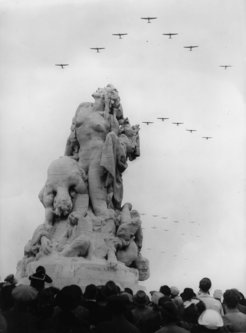Reassembling and Staging Feelings
Remembrance Ceremonies in Interwar France and the Politics of Commemoration

Karsten Lichau
After 1918, many European countries grappled with the establishment of a ceremony to commemorate fallen soldiers. In France, the emotional set-up of the ceremony articulated the disputes between different institutions such as the state, the church, and veterans’ organizations.
While most ex-soldiers’ groups favoured an event centring a posture of humble mourning and devotion, and although the Catholic church sided with the veterans’ ‘funereal physiognomy’, the state was opposed to this, preferring a more traditional approach of ‘glorification and triumph’.
Over the course of several years, the conflict gave rise to new emotional templates that, in turn, transformed and restructured the emotional framework of those institutions.
Italian Fascism and the Politics of Grief
Hannah Malone
Mussolini’s Fascist regime politicised the remembrance of the First World War by linking a narrative of heroism with specific notions of grief. Given the scale of Italy’s losses in the war, commemoration of the fallen was a highly emotional issue, which gave the regime a powerful means of political communication.
As the Fascist authorities sought to exploit feelings towards the dead for the purpose of mobilizing the Italian population, emotions came to define the political agenda. In seeking a high degree of emotional control, the Italian dictatorship elaborated on strategies of manipulation that were later imitated by other authoritarian powers, including Hitler’s Germany and Franco’s Spain. Ossuaries from the time provide evidence of the political intentions of the Fascist regime and the emotional responses that visitors were meant to feel. Architecture and its surrounding discourse thus acted as carriers of emotional messages with political intent.
